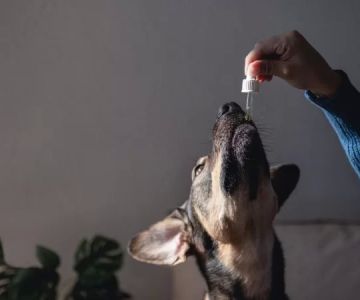Signs of Anxiety in Pets and How to Help
As pet owners, we often pride ourselves on understanding our animals, knowing when they are happy, hungry, or simply seeking attention. However, one of the more challenging aspects of pet care is recognizing when your pet is stressed or anxious. Anxiety in pets can manifest in a variety of ways, and understanding the signs is the first step in providing the necessary support. In this article, I’ll explore the common signs of anxiety in pets and share practical tips on how to help alleviate their stress. This is crucial information for any pet parent concerned about the mental well-being of their furry companion.
1. Understanding Pet Anxiety: What It Is and Why It Happens
Just like humans, pets can experience anxiety. The causes of anxiety in pets can vary widely—from a change in environment, loud noises, or separation from their owners to more complex issues like past trauma. While some pets are more prone to anxiety, it is important to remember that this is a real condition that can affect your pet’s overall health and behavior.
Common triggers of anxiety in pets include:
- Separation anxiety when left alone
- Fear of loud noises, such as thunderstorms or fireworks
- Changes in the home environment, like moving to a new house or new family members
- Travel or car rides
- Previous trauma or negative experiences with people or other animals
Recognizing the signs early can prevent the anxiety from worsening and allow you to take steps to help your pet feel more secure and comfortable.
2. Common Signs of Anxiety in Pets
Pets, particularly dogs and cats, can’t tell us when they’re feeling anxious, but they do communicate through their behavior. Here are some common signs of anxiety that pet owners should watch out for:
Excessive Barking or Meowing
One of the first signs of anxiety in pets is an increase in vocalization. For dogs, this could mean excessive barking or whining, especially when left alone. Cats, too, might start meowing louder or more frequently than usual. If your pet’s usual vocal behavior changes significantly, it could indicate stress or anxiety.
Aggression or Fearfulness
Some pets react to anxiety with aggression or fearfulness. Dogs might growl, snap, or bite when they are anxious, while cats may hide or show defensive behavior like hissing or swatting. If your pet has a sudden change in temperament, it’s important to investigate whether anxiety could be the underlying cause.
Destructive Behavior
When pets are left alone or feel nervous, they may engage in destructive behaviors such as chewing furniture, scratching carpets, or digging at doors. For example, a dog with separation anxiety may chew through a door frame or even break out of a crate. This is a clear sign that your pet is trying to cope with their feelings of distress.
Excessive Grooming or Licking
Pets that are stressed may engage in excessive grooming behaviors. Cats might lick themselves continuously, leading to hair loss or sore spots, while dogs might excessively lick their paws or other parts of their bodies. This behavior is often a sign of anxiety or nervousness.
Changes in Eating or Drinking Habits
Stress can affect your pet’s appetite. Some pets may eat or drink excessively, while others may refuse to eat or drink altogether. A sudden change in your pet’s eating or drinking habits can indicate anxiety or another underlying health issue.
3. Helping Your Pet: Practical Solutions for Managing Anxiety
Once you’ve identified that your pet is struggling with anxiety, there are several steps you can take to help them feel more secure. Here are some strategies that have worked well for me and many other pet owners:
Creating a Safe and Calm Environment
Providing a peaceful, calm environment is essential for anxious pets. Make sure your pet has a quiet space in the home where they can retreat to if they feel overwhelmed. For dogs, this might be a crate or a cozy corner with their favorite blanket. Cats often prefer small, hidden spaces like boxes or high shelves where they can feel safe and secure.
Routine and Consistency
Pets thrive on routine. Establishing a consistent schedule for meals, walks, playtime, and rest can help reduce anxiety. Predictability in daily life makes your pet feel safer, especially when they know what to expect. For example, taking your dog for a walk at the same time every day can provide them with a sense of stability.
Interactive Toys and Puzzles
Sometimes, pets experience anxiety out of boredom or excess energy. Interactive toys, treat puzzles, or puzzle feeders can help distract your pet and keep them mentally engaged. These toys encourage problem-solving and can calm pets by giving them a sense of purpose.
Calming Products and Supplements
There are many products available that can help calm anxious pets. From pheromone diffusers, which mimic the calming scent of a mother’s pheromones, to calming collars and sprays, these products can help soothe your pet during stressful situations. There are also natural supplements, such as CBD oils or calming chews, that may help manage anxiety symptoms in some pets.
Seeking Professional Help
If your pet’s anxiety persists or worsens despite your efforts, it may be time to consult with a veterinarian or a professional animal behaviorist. A vet can help rule out medical conditions that may be contributing to your pet’s anxiety, and a behaviorist can work with you to develop a training plan to address specific anxiety triggers.
4. The Importance of Patience and Understanding
Dealing with a pet’s anxiety can be frustrating at times, but it’s important to remember that their behavior is often a cry for help. Anxiety is a serious issue that can affect your pet’s overall health and quality of life, so it’s crucial to be patient and understanding throughout the process. With time, effort, and the right support, your pet can learn to manage their anxiety and lead a happier, more relaxed life.
OLD Keywords-31: SEO Title: Understanding Signs of Anxiety in Pets and How to Help Them Overcome It SEO Keywords: anxiety in pets, signs of anxiety in pets, how to help anxious pets, pet behavior, calming pets, anxiety solutions for pets, pet anxiety treatment SEO Description: Learn the signs of anxiety in pets and discover effective strategies to help them cope. Tips for calming anxious pets and improving their well-being.










